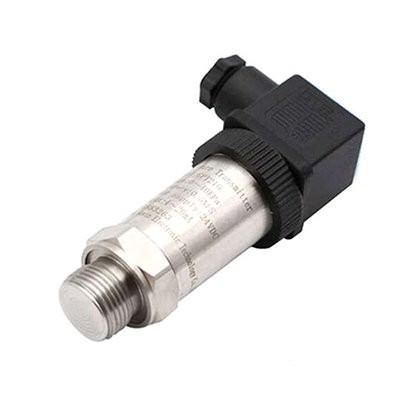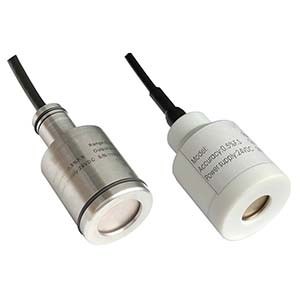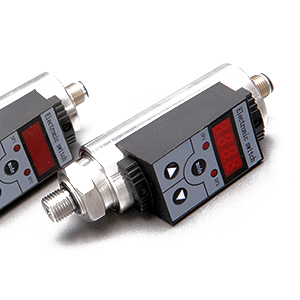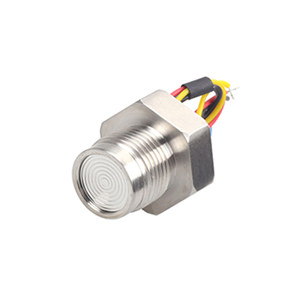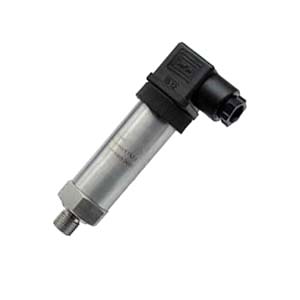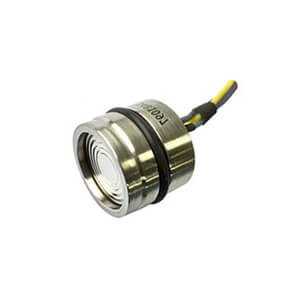What is pressure sensor response time?
All pressure sensors need some time to react when the pressure changes. This reaction time is called the response time.
Imagine you blow up a balloon and tie a knot in it after it’s inflated. You then connect the balloon to a pressure sensor. When you suddenly cut the knot with scissors, the air pressure inside the balloon will drop very fast. The sensor needs to quickly sense this pressure change.
The response time tells us how fast the sensor can do this sensing. It’s measured in milliseconds (ms), which is thousandths of a second. For example, a sensor with a 1ms response time means it takes 1ms to sense 90% of the full pressure change.

Pressure changes happen very rapidly in some applications like cars or machines. Their sensors need super quick response times, maybe just a few 100 microseconds. Other uses like weather stations see slower pressure shifts. There sensors can have response times of 10s of ms.
To get a fast response, sensor designers build them with thin, flexible materials to let pressure changes impact them rapidly. Electronics are optimized for speed too. But accuracy matters too, so a balance must be found.
How significant of response time in pressure measurement
When measuring pressure, you need to know the pressure level accurately over time. This is especially true if the pressure is changing rapidly.
Think about measuring engine pressures in a race car. The pressures inside the engine can change drastically within milliseconds as the pistons move up and down.
A sensor with a slower response time might not be able to track these fast pressure swings accurately. It might miss peaks or valleys in the pressure waveform.
Now let’s look at some actual sensor specs:
A high-performance sensor suitable for race cars may have a response time of just 250 microseconds (0.00025 seconds).
Meanwhile, a standard sensor used in a home weather station might be around 10 milliseconds (0.01 seconds).
We can calculate how far off these sensors could be using some common pressure changes:
- F1 engine pressure may spike 100 psi in 1 millisecond. The 250 microsecond sensor would read around 95% accurate. But the 10 millisecond sensor would only catch 50% of the pressure increase.
- Hurricane pressure drops 30 psi in 30 seconds. Both sensors would read >99% accurate as pressure changes much slower.
Let’s put it in simple, the faster pressure changes, the more important a very fast response time is to get accurate real-time pressure measurements.
This is crucial for applications like engines but less critical for slower weather changes.
What is the relationship between response time and sensitivity
Sensitivity refers to how much the sensor’s output changes in response to a small pressure change. A highly sensitive sensor will produce a large output change for even a tiny amount of pressure difference.
Response time, as we discussed earlier, is how quickly a sensor responds to a pressure change by settling at its final output value. A fast response time is important to accurately track rapid pressure fluctuations.
So how are response time and sensitivity related? Sensors with higher sensitivity generally have slower response times, and vice versa.
Let me give a practical example:
A highly sensitive medical sensor may detect 0.1 psi changes in airway pressure. But due to its design focusing on sensitivity, its response time is 50 milliseconds.
Meanwhile, a sensor for measuring engine RPM has a response time of only 1 millisecond. However, its sensitivity is lower at 1 psi, since performance is optimized for speed over tiny pressure detection.
The physics of how pressure sensors work means improving one characteristic typically reduces the other. Application needs dictate the right balance between sensitivity and response time for accurate real-time pressure measurement. A faster or slower response may be preferable depending on the specific measurement demands.
Which is high response industry and which is low?
Industries like racing and aerospace that need very fast sensor response times of 1ms or less:
- Engine pressures inside a F1 car may swing 100 PSI in just 2ms during acceleration.
- Jet engine turbine pressures fluctuate up to 200 PSI every 20ms during flight.
To capture these rapid 10’s-100’s of psi/ms transients, sensors use thin foil or MEMS technology with times below 1ms.
Meanwhile, industries like weather monitoring or building automation with slower 10-100ms response sensors:
- Hurricane pressure drops 30 PSI over 30 seconds, a slow 0.1 PSI/sec decline.
- HVAC systems experience 0.5-2 PSI swings every few minutes during operation.
In these stable environments with gradual 0.01-1 PSI/sec changes, sturdier sensor designs involving thicker diaphragms or bourdon tubes are sufficient.
So fast industries need microsecond-range sensors to precisely track 10’s-100’s PSI/ms transients, while slow industries can use lower-cost 10-100ms sensors well-suited for measuring 0.01-1 PSI/sec pressure variations.
How to build high response time pressure sensor?
To sense pressure changes quickly, the sensor needs a part that can flexibly move in response to even tiny pressures. A common choice is a thin flexible silicon diaphragm. It will bend sharply under very small pressure differences.
On the back of the diaphragm a pressure sensor chip is placed with piezoresistive strain gauges. These are thin wires made of a material that changes electrical resistance when bent. As pressure bends the diaphragm, the strain gauges bend and their resistance changes.
To build a 1ms sensor, the silicon diaphragm could be only 10 microns thick – that’s 1/10 the width of a human hair! At this size it will flex very quickly when pressures shift. The wires could be even smaller at only 1 micron width.
The sensor chip circuitry is also optimized for rapid responses. It uses a Wheatstone bridge circuit to quickly turn the tiny resistance changes into an output voltage signal. Processing this with high-speed components further boosts measurement speed.
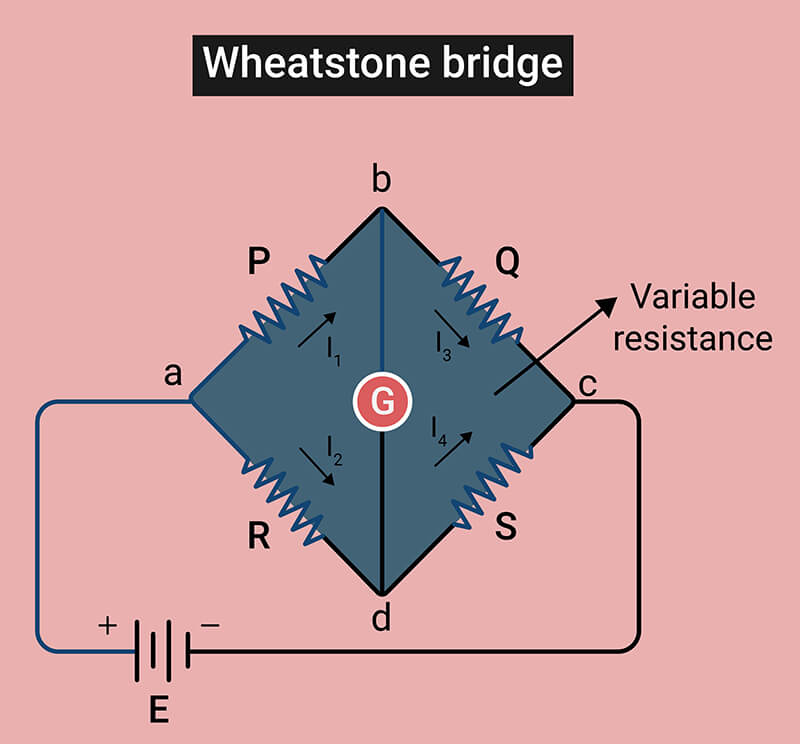
Everything is miniaturized – the whole sensor could be smaller than a grain of rice! Its small size means pressures cause instant flexing of the diaphragm and strain wires for sub-millisecond responses.
By intelligently designing the flexible elements and high-speed circuitry, engineers can create ultra-responsive pressure sensors suitable for demanding fields like race cars or jet engines.
Is high response time always better than low response time?
We can take the same example as earlier.
A race car engine needs to measure 0-200 PSI changes every 2 milliseconds.
A sensor with a 1ms response time would accurately catch 90% of each pressure swing. But a 10ms sensor would only see 20% of the change before it starts going back down. The fast sensor is better here.
Now a weather station monitoring hurricanes. Pressure drops 30 PSI over 30 seconds.
Even a slower 10ms sensor would still track 99.9% of the change since it’s gradual. A 1ms sensor offers no real benefit for this use.
To give real numbers from product specs:
- A high-end 1ms sensor costs $50 but its thin parts break easily.
- A standard 10ms sensor is only $25 and built tough for outdoor use.
If the weather station just needs general pressure readings during storms, the lower cost 10ms sensor works fine.
So obviously, for fast-changing dynamics, faster is better for precision measurements. But when changes are slow and gentle, a lower response time can be adequate while offering benefits like lower cost or greater durability. It depends on the specific application needs.
Different sensing technology and different response time
Different sensing mechanisms like piezoresistive, capacitive, optical and resonant can give responses ranging from 1ms to below 1us depending on the technology and sensor design/needs. Newer approaches like MEMS are also pushing response times lower.
- Piezoresistive: These utilize silicon strain gauges that change resistance under pressure. Very common and inexpensive. Response times range from around 1-10ms.
- Capacitive: Work by measuring capacitance changes between a diaphragm and a base plate under pressure. Generally faster than piezoresistive, with responses as low as 500us.
- Optical/Fiber Optic: Leverage how pressure alters light properties in an optical fiber. Can attain ultra-fast responses below 100us due to lack of electrical components.
- Resonant: Involve a diaphragm that vibrates at a set frequency, shifting under pressure loads. Some have response times less than 1us but are more expensive.
- Piezoelectric: Rely on generated electric voltage from pressures applied to quartz or ceramic material. Fast responses of 10-100us but cannot measure static pressures.
- Electromagnetic: Monitor pressure-induced variations in a magnetic field inducing voltage in a coil. Often have the fastest response times below 1us for dynamic measurements.
Enhancing Pressure Sensor Response Time in Practice
By optimizing both the mechanical sensor design and electronic components handling the signals, engineers can significantly boost performance to capture even the most rapid pressure transients experienced in applications like race cars, aircraft and manufacturing machinery. Faster and better measurements result.
Here are some ways engineers can enhance a pressure sensor’s response time using easy to understand examples:
- Using a thinner material for the flexible diaphragm is very effective. A common diaphragm may be 50 microns thick – about half the width of a human hair. Making it 25 microns allows much faster bending under even small pressure changes.
- Improving circuit speed is also key. Racing engineers upgraded a sensor’s microchips to operate at 200 kHz instead of 100 kHz. This doubled the sampling rate, reducing the signal processing delay from 5 milliseconds to just 2.5 ms.
- Replacing bulkier wire connections with glass fiber optic threading eliminated an extra 1 millisecond latency per sensor signal sent to the data logger. Together with circuit tweaks, response improved from 8 ms to 4 ms.
- MEMS sensor arrays are another option. Instead of one large diaphragm, 100 tiny separate sensors are combined. Each has a 1 micron thick diaphragm that flexes extremely fast. Working together, they provide a full pressure reading with an ultra-quick 1/10th millisecond response.
Wrap up
Pressure sensor response time refers to how quickly the sensor responds to changes in pressure. It’s defined as the time for the sensor output to reach 90% of its final value after a step change. Response times can range from microseconds to seconds depending on the application and sensor design.
Understanding response time is important when selecting a sensor, as applications with rapidly fluctuating pressures on fast timescales like engines or aircraft require very fast response times under 1ms. Slower industrial processes and weather monitoring can tolerate slower sensors in the 10-100ms range.
Faster response sensors using thin flexible materials can detect transients but sacrifice accuracy. Slower sensors prioritize precision over speed. Sensitivity also relates to response – higher sensitivity correlates to slower responses. Sensor designers employ techniques like optimized circuits and MEMS arrays to boost response times for demanding applications requiring real-time dynamic pressure measurement.

